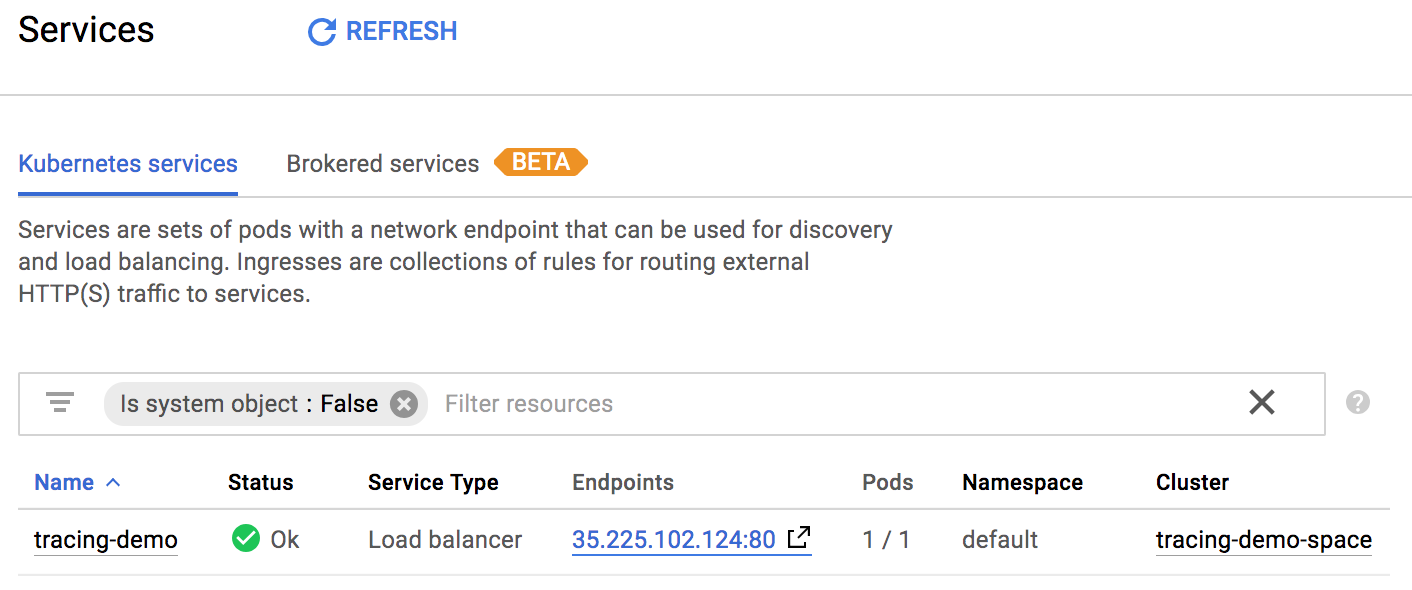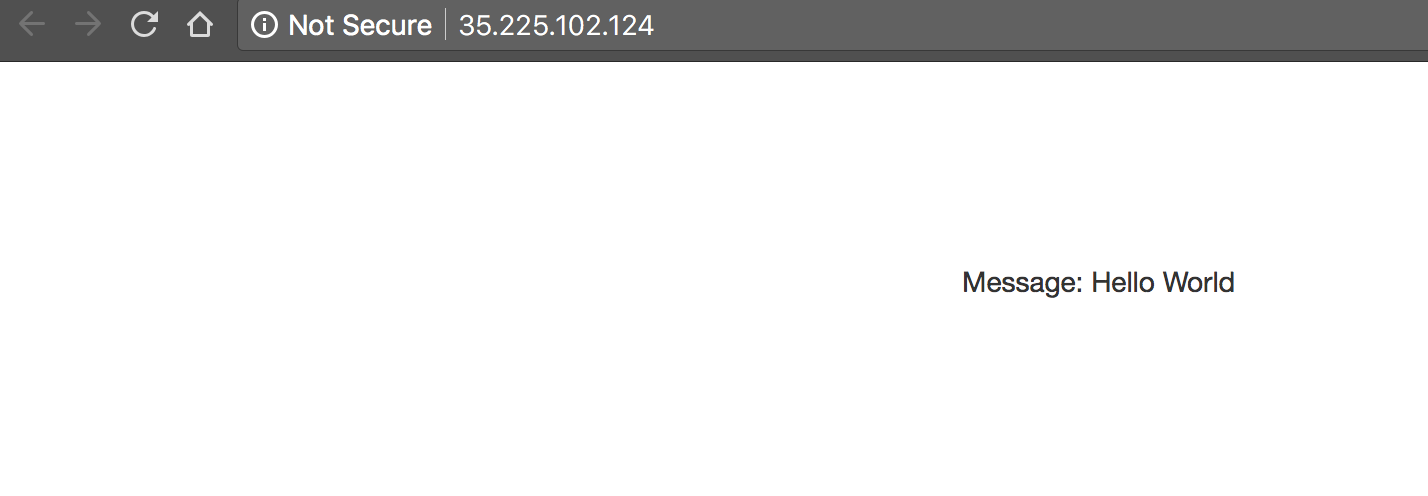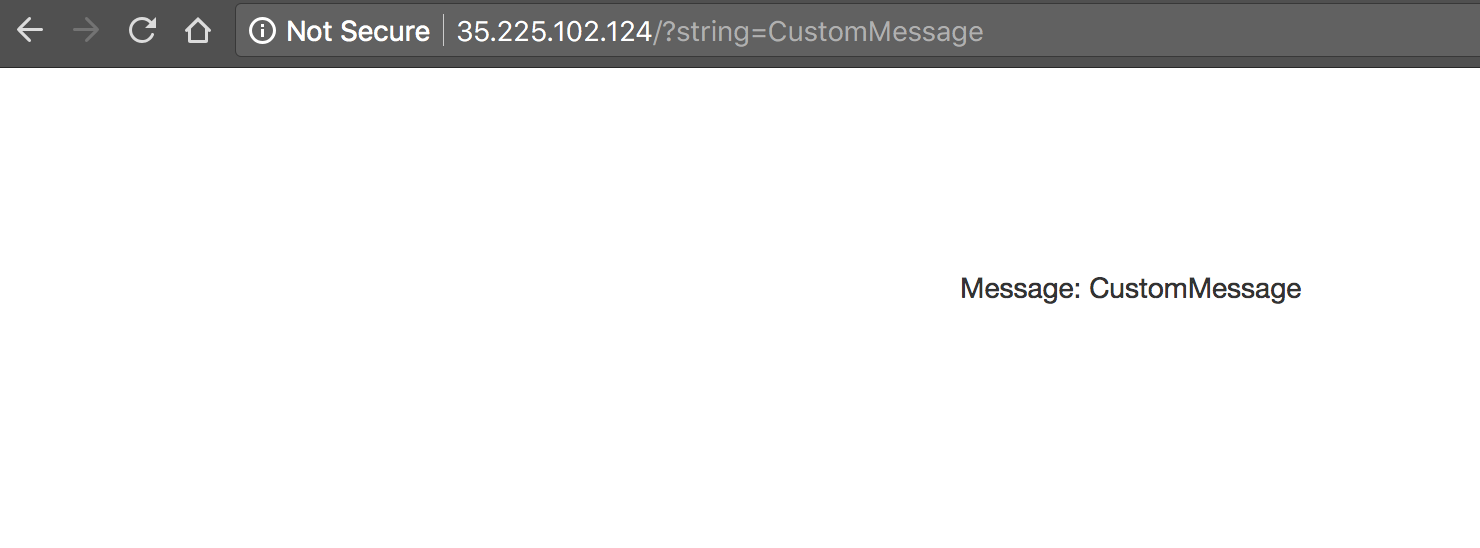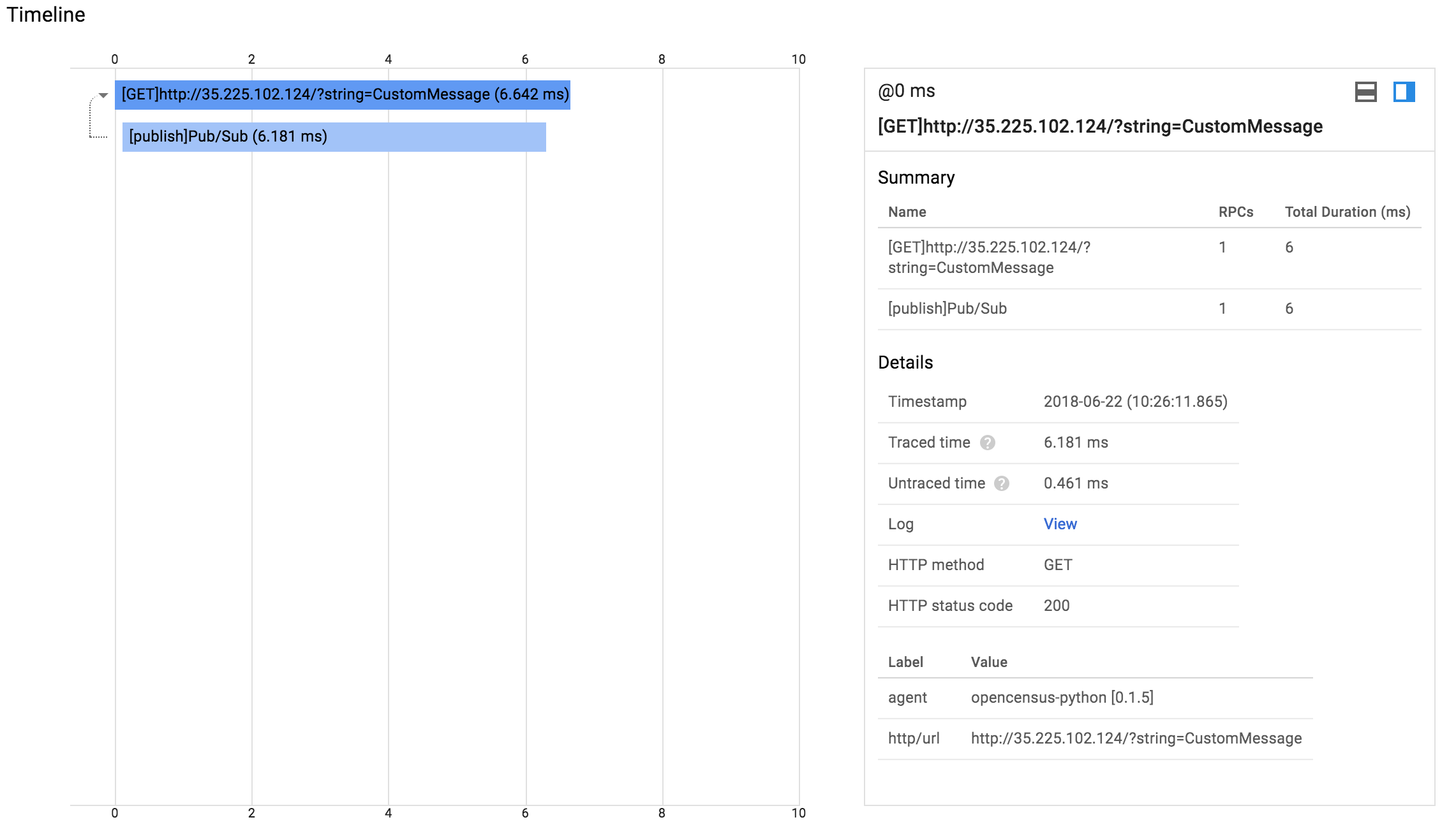- Introduction
- Architecture
- Prerequisites
- Deployment
- Validation
- Teardown
- Troubleshooting
- Relevant Materials
When supporting a production system that services HTTP requests or provides an API, it is important to measure the latency of your endpoints to detect when a system's performance is not operating within specification. In monolithic systems this single latency measure may be useful to detect and diagnose deteriorating behavior. With modern microservice architectures, however, this becomes much more difficult because a single request may result in numerous additional requests to other systems before the request can be fully handled. Deteriorating performance in an underlying system may impact all other systems that rely on it. While latency can be measured at each service endpoint it can be difficult to correlate slow behavior in the public endpoint with a particular sub-service that is misbehaving.
Enter distributed tracing. Distributed tracing uses metadata passed along with requests to correlate requests across service tiers. By collecting telemetry data from all the services in a microservice architecture and propagating a trace id from an initial request to all subsidiary requests, developers can much more easily identify which service is causing slowdowns affecting the rest of the system.
Google Cloud Platform (GCP) provides the Stackdriver suite of products to handle logging, monitoring, and distributed tracing. This document will discuss the latter feature and provide a distributed tracing demo that can service as a basis for your own applications. The demo will be deployed to Kubernetes Engine and will demonstrate a multi-tier architecture implementing distributed tracing. It will also take advantage of Terraform to build out necessary infrastructure.
This demo requires an active GCP account. You can sign up for a free account if you don't already have one. It will come with free credits for beginning your GCP experience.
This demo is designed for MacOS and Linux systems but users can alternatively use the Google Cloud Shell entirely in the cloud without requiring a local system.
This demonstration application will begin by deploying a Kubernetes Engine cluster. To this cluster will be deployed a simple web application fronted by a load balancer. The web app will publish messages provided by the user to a Cloud Pub/Sub topic. The application is instrumented such that HTTP requests to it will result in the creation of a trace whose context will be propagated to the Cloud Pub/Sub publish API request. The correlated telemetry data from these requests will be available in the Stackdriver Trace Console.
The steps described in this document require the installation of several tools and the proper configuration of authentication to allow them to access your GCP resources.
The following APIs need to be enabled:
- Kubernetes Engine API
- Stackdriver Trace API
A script is provided in the /scripts folder named enable-apis.sh that will enable these three API's. Follow these steps to execute the script:
- In the GCP console, change to the project you want to enable the API's for.
- Click on the Activate Cloud Shell Console Visit the APIs & Services section of the GCP Console.
- Upload the enable-apis.sh script in the Cloud Shell window.
- Execute the script.
The Google Cloud SDK is used to interact with your GCP resources. Installation instructions for multiple platforms are available online.
The Google Cloud SDK provides a gcloud command that is used to interact with
GCP via its APIs. The base installation only includes some of the possible
components that are available. The following command will display available
components:
gcloud components listThis demo also requires kubectl so you will need to
install it as well.
Terraform is used to automate the manipulation of cloud infrastructure. Its installation instructions are also available online.
In order to interact with GCP from your system you will need to authenticate:
gcloud auth application-default loginFollowing the principles of infrastructure as code and immutable infrastructure, Terraform supports the writing of declarative descriptions of the desired state of infrastructure. When the descriptor is applied, Terraform uses GCP APIs to provision and update resources to match. Terraform compares the desired state with the current state so incremental changes can be made without deleting everything and starting over. For instance, Terraform can build out GCP projects and compute instances, etc., even set up a Kubernetes Engine cluster and deploy applications to it. When requirements change, the descriptor can be updated and Terraform will adjust the cloud infrastructure accordingly.
This example will start up a Kubernetes Engine cluster using Terraform. Then you will use Kubernetes commands to deploy a demo application to the cluster. By default, Kubernetes Engine clusters in GCP are launched with a pre-configured Fluentd-based collector that forwards logging events for the cluster to Stackdriver. Interacting with the demo app will produce trace events that are visible in the Stackdriver Trace UI.
There are three Terraform files provided with this example. The first one,
main.tf, is the starting point for Terraform. It describes the features that
will be used, the resources that will be manipulated, and the outputs that will
result. The second file is provider.tf, which indicates which cloud provider
and version will be the target of the Terraform commands--in this case GCP. The
final file is variables.tf, which contains a list of variables that are used
as inputs into Terraform. Any variables referenced in the main.tf that do not
have defaults configured in variables.tf will result in prompts to the user
at runtime.
Given that authentication was configured above, we are now ready to deploy the infrastructure. Run the following command to do the deploy:
./deploy.shThis script will manage the deployment by doing the following things:
- Generate the Terraform variable values using the
generate-tfvars.shscript - Ensure Terraform is initialized using
terraform init - Deploy the Terraform resources using
terraform apply - Deploy the Kubernetes resources using
kubectl apply -f ./tracing-demo-deployment.yaml
You will need to enter any variables again that don't have defaults provided. If no errors are displayed then after a few minutes you should see your Kubernetes Engine cluster in the GCP Console with the sample application deployed.
At this point you should find a Kubernetes cluster has been deployed to GCP and a Pub/Sub topic will have be been created as well a subscription to the topic. The final thing you should see is a Kubernetes deployment in the Workload tab of the Kubernetes Engine Console
Once the app has been deployed, it can be viewed in the Workload tab of the Kubernetes Engine Console. You can also see the load balancer that was created for the application in the Services section of the console.
Once the demo application is deployed, go to https://console.cloud.google.com/kubernetes/discovery and if it isn't already selected select the project used for this demo with the combobox in the upper-left corner. You should see a list of your exposed services:
Clicking on the endpoint listed next to the tracing-demo load balancer will
open the demo app web page in a new tab of your browser. Note that your IP
address will likely be different from the example above. The page displayed is
simple:
To the url, add the string: ?string=CustomMessage and see that the message is
displayed:
As you can see, if a string parameter is not provided it uses a default value
of Hello World. The app itself isn't very interesting. We are simply using it
to generate trace telemetry data.
Navigate to https://console.cloud.google.com/traces/traces and select your project from the combobox in the upper left-hand corner of your screen if it is not already selected. You should see a chart displaying trace events plotted on a timeline with latency as the vertical metric.
Click on one of the dots on the chart. You will see a chart with two bars, the top one longer than the bottom one:
The top bar is known as the root span and represents the duration of the HTTP request, from the moment the first byte arrives until the moment the last byte of the response is sent. The bottom bar represents the duration of the request made when sending the message to the Pub/Sub topic.
Since the handling of the HTTP request is blocked by the call to the Pub/Sub API it is clear that the vast majority of the time spent within the HTTP request is taken up by the Pub/Sub interaction. This demonstrates that by instrumenting each tier of your application you can easily identify where the bottlenecks are.
As described in the Architecture section of this document,
messages from the demo app are published to a Pub/Sub topic. These messages can
be consumed from the topic using the gcloud CLI:
gcloud pubsub subscriptions pull --auto-ack --limit 10 tracing-demo-cli
┌─────────────┬─────────────────┬────────────┐
│ DATA │ MESSAGE_ID │ ATTRIBUTES │
├─────────────┼─────────────────┼────────────┤
│ Hello World │ 121487601177521 │ │
└─────────────┴─────────────────┴────────────┘Pulling the messages from the topic has no impact on tracing. This section simply provides a consumer of the messages for verification purposes.
Stackdriver monitoring and logging are not the subject of this demo, but it is worth noting that the application you deployed will publish logs to Stackdriver Logging and metrics to Stackdriver Monitoring
For instance, see https://app.google.stackdriver.com/metrics-explorer and
select the GKE Container Resource Type and the CPU usage metric. You should
see a chart of this metric plotted for different pods running in the cluster:
As well, logs can be seen at https://console.cloud.google.com/logs/viewer:
You may need to click the Load older logs button to display published logs.
When you are finished with this example you will want to clean up the resources that were created so that you avoid accruing charges:
terraform destroySince Terraform tracks the resources it created it is able to tear down the cluster, the Pub/Sub topic, and the Pub/Sub subscription.
-
You may run into an issue where an API has not been enabled for your project. If you receive such an error the necessary API name may be listed. You can enable it with:
gcloud services list <service-name>where
<service-name>is the identified service name. If the disabled API is not provided you can see a list of those available with the following command:gcloud services list --available
Identify the necessary service and enable it with the above command. Keep in
mind the
principle of least privilege
and limit access to those strictly necessary to run your applications.
2. A number of possible errors can be diagnosed using the kubectl command.
For instance, a deployment can be shown:
kubectl get deployment tracing-demo
NAME DESIRED CURRENT UP-TO-DATE AVAILABLE AGE
tracing-demo 1 1 1 1 2hMore details can be shown with describe:
kubectl describe deployment tracing-demo
...This command will show a list of deployed pods:
kubectl get pod
NAME READY STATUS RESTARTS AGE
tracing-demo-59cc7988fc-h5w27 1/1 Running 0 2hAgain, details of the pod can be seen with describe:
kubectl describe pod tracing-demo
...Once the pod name is known logs can be viewed locally:
kubectl logs tracing-demo-59cc7988fc-h5w27
10.60.0.1 - - [22/Jun/2018:19:42:23 +0000] "HEAD / HTTP/1.0" 200 - "-" "-"
Publishing string: Hello World
10.60.0.1 - - [22/Jun/2018:19:42:23 +0000] "GET / HTTP/1.1" 200 669 "-" "Mozilla/5.0 (Windows NT 10.0; WOW64) AppleWebKit/537.36 (KHTML, like Gecko) Chrome/51.0.2704.103 Safari/537.36"- The install script fails with a
Permission deniedwhen running Terraform. The credentials that Terraform is using do not provide the necessary permissions to create resources in the selected projects. Ensure that the account listed ingcloud config listhas necessary permissions to create resources. If it does, regenerate the application default credentials usinggcloud auth application-default login.
The following are some relevant materials for further investigation:
Kubernetes is a container orchestration platform popular in microservice architectures. GCP provides a managed version of Kubernetes called Kubernetes Engine.
OpenCensus provides standardized libraries for capturing and publishing trace telemetry data. Libraries are provided for a number of popular languages and numerous trace platforms are supported, including Stackdriver and Zipkin. The demo this document describes uses OpenCensus to publish telemetry data to Stackdriver.
Spring Sleuth provides instrumentation of Java applications that use the popular Spring framework. Spring Sleuth supports an abstraction over distributed trace telemetry collectors so developers can seamlessly switch between Zipkin, Stackdriver, and other trace engines.
Stackdriver is a suite of tools in GCP providing logging, monitoring, tracing, and related features. This document and demo are particularly concerned with the Stackdriver Trace feature it provides.
Terraform is a declarative infrastructure as code tool that enables configuration files to be used to automate the deployment and evolution of infrastructure in the cloud.
Zipkin is a distributed tracing tool that helped popularize the practice. Many frameworks provide Zipkin integration and those that don't can implement their own.
Applications that are already instrumented for Zipkin can have their Zipkin telemetry data adapted to Stackdriver events through the use of a Zipkin Collector. It can be deployed to Kubernetes Engine:
kubectl run stackdriver-zipkin --image=gcr.io/stackdriver-trace-docker/zipkin-collector --expose --port=9411This will deploy the collector to the well known Zipkin port 9411 and
applications looking for it on their local port will find it indistinguishable
from a Zipkin server but telemetry data will appear in Stackdriver Trace.
This is not an officially supported Google product







